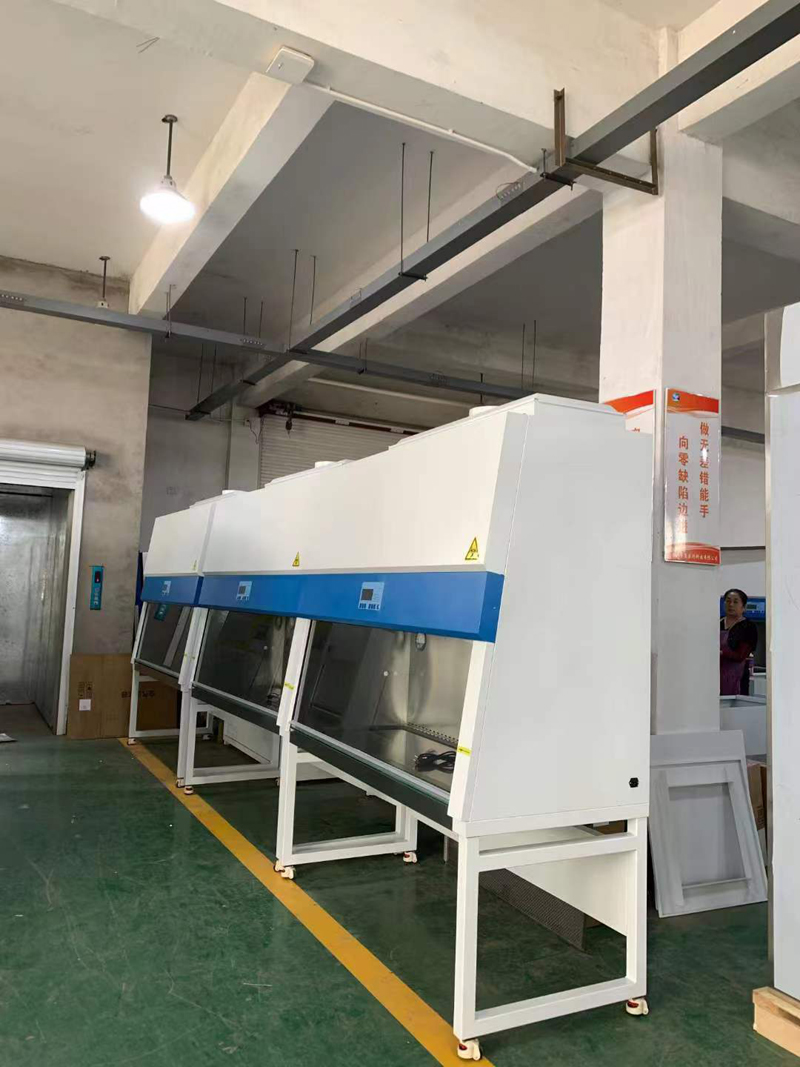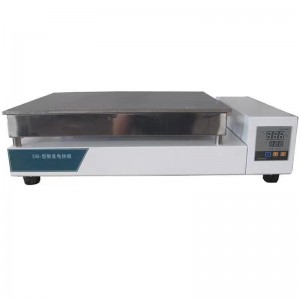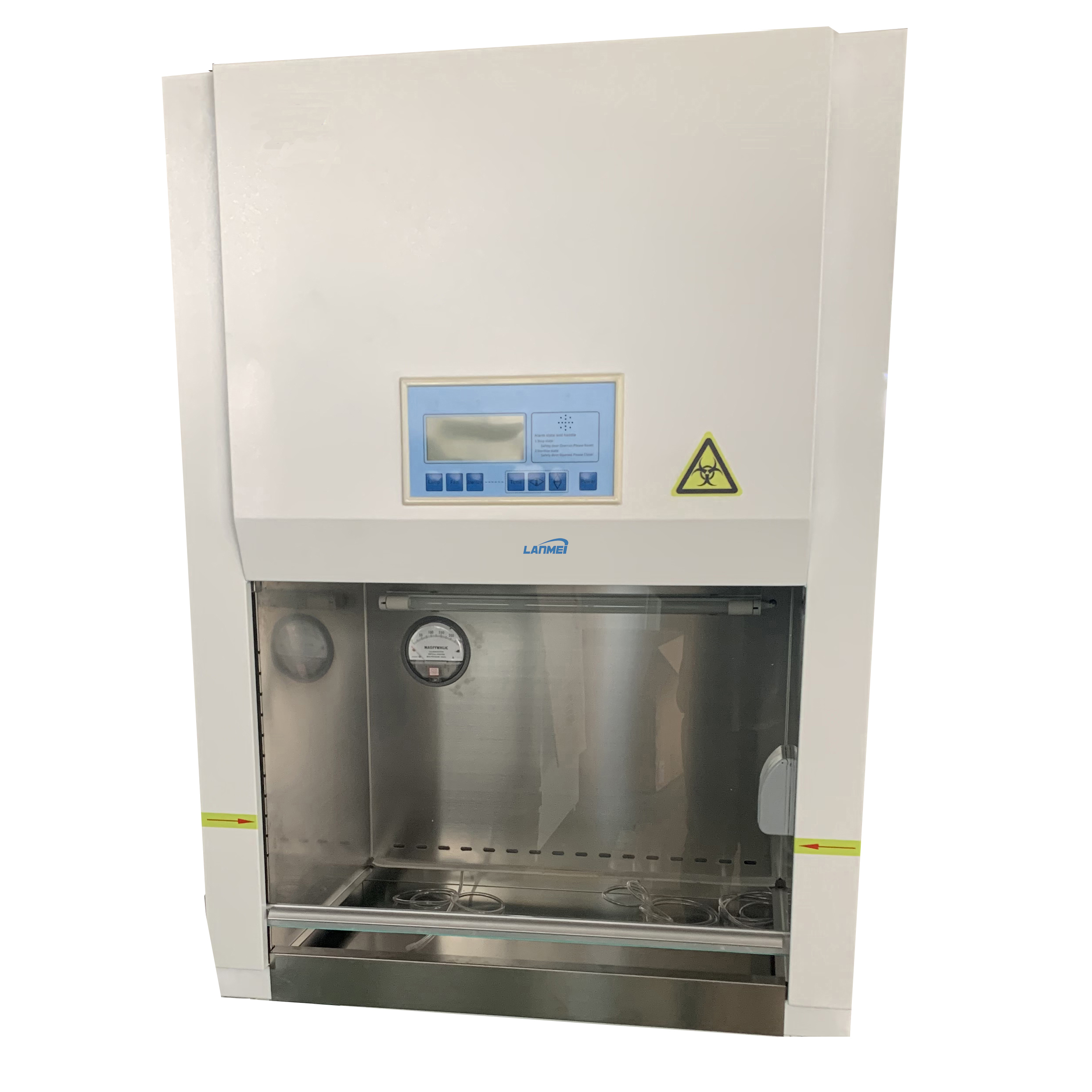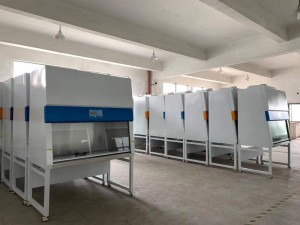Class II Biosafety Cabinet
- Product Description
Class II Type A2/B2 Biological Safety Cabinet/Class II Biosafety Cabinet
Biological Safety Cabinet Class II Series is engineered specifically for laboratory operations that require user and product protection.
Biological safety cabinet (BSC) is a box-type air purification negative pressure safety device that can prevent some dangerous or unknown biological particles from escaping aerosols during experimental operation. It is widely used in scientific research, teaching, clinical inspection and production in the fields of microbiology, biomedicine, genetic engineering, biological products, etc. It is the most basic safety protection equipment in the first-level protective barrier of laboratory biosafety.
How Biological Safety Cabinets Work:
The working principle of the biological safety cabinet is to suck the air in the cabinet to the outside, keep the negative pressure in the cabinet, and protect the staff through vertical airflow; the outside air is filtered by high-efficiency particulate air filter (HEPA). The air in the cabinet also needs to be filtered by HEPA filter and then discharged into the atmosphere to protect the environment.
Principles for selecting biological safety cabinets in biosafety laboratories:
When the laboratory level is one, it is generally not necessary to use a biological safety cabinet, or use a class I biological safety cabinet. When the laboratory level is Level 2, when microbial aerosols or splashing operations may occur, a Class I biological safety cabinet can be used; when dealing with infectious materials, a Class II biological safety cabinet with partial or full ventilation should be used ; If dealing with chemical carcinogens, radioactive substances and volatile solvents, only Class II-B full exhaust (Type B2) biological safety cabinets can be used. When the laboratory level is Level 3, a Class II or Class III biological safety cabinet should be used; all operations involving infectious materials should use a fully exhausted Class II-B (Type B2) or Class III biological safety cabinet. When the laboratory level is level four, a level III full exhaust biological safety cabinet should be used. Class II-B biological safety cabinets can be used when personnel wear positive pressure protective clothing.
Biosafety Cabinets (BSC), also known as Biological Safety Cabinets, offer personnel, product, and environmental protection through laminar airflow and HEPA filtration for the biomedical/microbiological lab.
Biological safety cabinets generally consist of two parts: a box body and a bracket. The box body mainly includes the following structures:
1. Air Filtration System
The air filtration system is the most important system to ensure the performance of this equipment. It consists of a driving fan, an air duct, a circulating air filter and an external exhaust air filter. Its main function is to continuously make clean air enter the studio, so that the downdraft (vertical airflow) flow rate in the work area is not less than 0.3m/s, and the cleanliness in the work area is guaranteed to reach 100 grades. At the same time, the external exhaust flow is also purified to prevent environmental pollution.
The core component of the system is the HEPA filter, which uses a special fireproof material as the frame, and the frame is divided into grids by corrugated aluminum sheets, which are filled with emulsified glass fiber sub-particles, and the filtration efficiency can reach 99.99%~100%. The pre-filter cover or pre-filter at the air inlet allows the air to be pre-filtered and purified before entering the HEPA filter, which can prolong the service life of the HEPA filter.
2. External exhaust air box system
The outer exhaust box system consists of an outer exhaust box shell, a fan and an exhaust duct. The external exhaust fan provides the power for exhausting the unclean air in the working room, and it is purified by the external exhaust filter to protect the samples and experimental items in the cabinet. The air in the work area escapes to protect the operator.
3. Sliding front window drive system
The sliding front window drive system is composed of front glass door, door motor, traction mechanism, transmission shaft and limit switch.
4. The lighting source and UV light source are located on the inside of the glass door to ensure a certain brightness in the working room and to sterilize the table and air in the working room.
5. The control panel has devices such as power supply, ultraviolet lamp, lighting lamp, fan switch, and controlling the movement of the front glass door. The main function is to set and display the system status.
Class II A2 biological safety cabinet/biological safety cabinet manufactory's main characters: 1. Air curtain isolation design prevents internal and external cross-contamination, 30% of the air flow is discharged outside and 70% of the internal circulation, negative pressure vertical laminar flow, no need to install pipes.
2. The glass door can be moved up and down, can be positioned arbitrarily, is easy to operate, and can be completely closed for sterilization, and the positioning height limit alarm prompts.3. The power output socket in the work area is equipped with a waterproof socket and a sewage interface to provide great convenience for the operator4. A special filter is installed at the exhaust air to control emission pollution.5. The working environment is made of high-quality 304 stainless steel, which is smooth, seamless, and has no dead ends. It can be easily and thoroughly disinfected and can prevent the erosion of corrosive agents and disinfectants.6. It adopts LED LCD panel control and built-in UV lamp protection device, which can only be opened when the safety door is closed.7. With DOP detection port, built-in differential pressure gauge.8, 10° tilt angle, in line with the human body design concept
|
Model
|
BSC-1000IIA2
|
BSC-1300IIA2
|
BSC-1600IIA2
|
|
Airflow system
|
70% air recirculation, 30% air exhaust
|
||
|
Cleanliness grade
|
Class 100@≥0.5μm (U.S. Federal 209E)
|
||
|
Number of colonies
|
≤0.5pcs/dish·hour (Φ90mm culture plate)
|
||
|
Inside the door
|
0.38±0.025m/s
|
||
|
Middle
|
0.26±0.025m/s
|
||
|
Inside
|
0.27±0.025m/s
|
||
|
Front suction air speed
|
0.55m±0.025m/s (30% air exhaust)
|
||
|
Noise
|
≤65dB(A)
|
||
|
Vibration half peak
|
≤3μm
|
||
|
Power supply
|
AC single phase 220V/50Hz
|
||
|
Maximum power consumption
|
500W
|
600W
|
700W
|
|
Weight
|
210KG
|
250KG
|
270KG
|
|
Internal Size (mm) W×D×H
|
1040×650×620
|
1340×650×620
|
1640×650×620
|
|
External Size (mm) W×D×H
|
1200×800×2100
|
1500×800×2100
|
1800×800×2100
|
Class II biological safety cabinet B2/Biological safety cabinet manufactory Main characters:1. It accords with physical engineering principle, 10°inclination design, so the operating feel is more excellent.
2. Air insulation design to avoid cross pollution inside and outside air circulation within100% exhaust, vertical laminar negative pressure.
3. Equipped with spring up/down movable door in the front and back of work bench, flexible and convenient to locate
4. Equipped with special filter on ventilation to keep vented air conforming to national standard.
5. Contact switch adjusts voltage to keep wind speed in working area in ideal state all the time.
6. Operate with LED panel.
7. The material of the work area is 304 stainless steel.
Photos:
Digital display control panel
All steel structure
Easy to move
Lighting,Sterilization system safety interloc
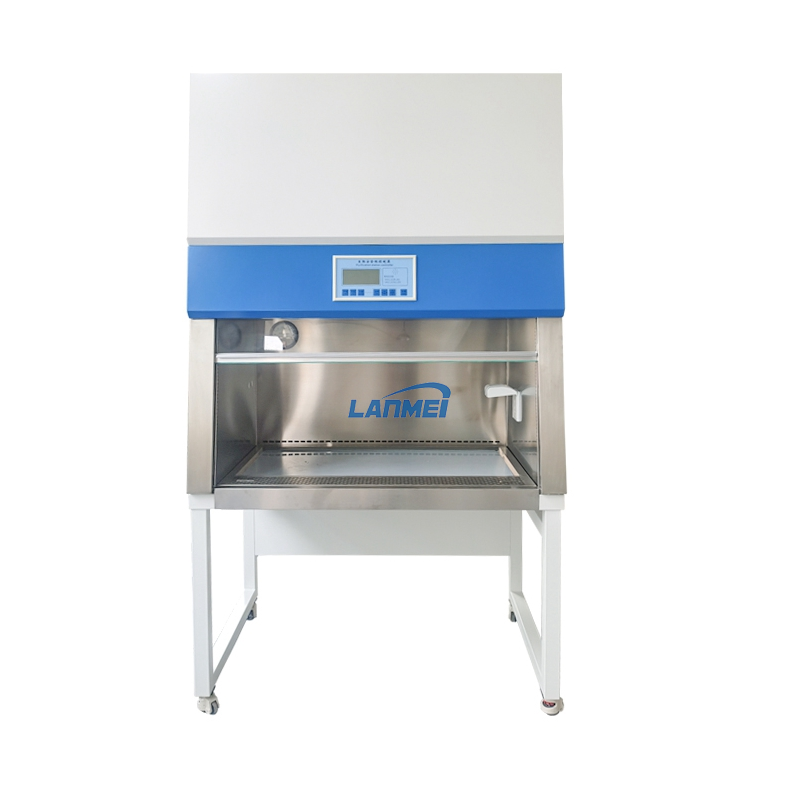
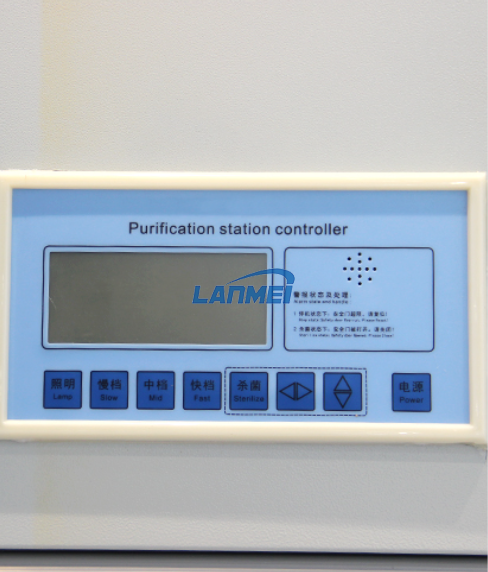
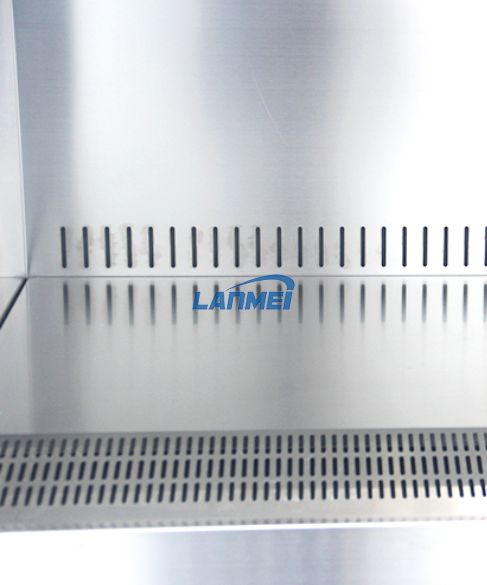
Installation of biological safety cabinets:
1. The biological safety cabinet shall not be placed sideways, impacted, or collided during transportation, and shall not be directly attacked by rain and snow and exposed to sunlight.
2. The working environment of the biological safety cabinet is 10~30℃, and the relative humidity is <75%.
3. The equipment should be installed on a level surface that cannot be moved.
4. The device must be installed close to a fixed power socket. In the absence of an external exhaust system, the top of the device should be at least 200mm away from the obstacles at the top of the room, and the rear should be at least 300mm away from the wall, so as to facilitate the smooth flow of external exhaust and Maintenance of safety cabinets.
5. In order to prevent airflow interference, it is required that the equipment should not be installed in the passage of personnel, and the operating window of the sliding front window of the biological safety cabinet should not be facing the doors and windows of the laboratory or too close to the doors and windows of the laboratory. Where the airflow may be disturbed.
6. For use in high altitude areas, the wind speed must be recalibrated after installation.
Use of biological safety cabinets:
1. Turn on the power.
2. Put on clean lab coats, clean your hands, and use 70% alcohol or other disinfectants to thoroughly wipe the working platform in the safety cabinet.
3. Put the experimental items in the safety cabinet as required.
4. Close the glass door, turn on the power switch, and turn on the UV lamp if necessary to disinfect the surface of the experimental items.
5. After the disinfection is completed, set it to the working state of the safety cabinet, open the glass door, and make the machine run normally.
6. The equipment can be used after completing the self-cleaning process and running stably.
7. After finishing the work and taking out the waste, wipe the working platform in the cabinet with 70% alcohol. Maintain air circulation for a period of time to expel contaminants from the work area.
8. Close the glass door, turn off the fluorescent lamp, and turn on the UV lamp for disinfection in the cabinet.
9. After disinfection is complete, turn off the power.
Precautions:
1. In order to avoid cross-contamination between items, the items needed in the whole work process should be lined up and placed in the safety cabinet before the work starts, so that no items need to be taken out through the air flow partition or taken out before the work is completed. Put in, pay special attention: No items can be placed on the return air grilles of the front and rear rows to prevent the return air grilles from being blocked and affecting the air circulation.
2. Before starting the work and after completing the work, it is necessary to maintain the air circulation for a period of time to complete the self-cleaning process of the safety cabinet. After each test, the cabinet should be cleaned and disinfected.
3. During the operation, try to reduce the number of times the arms go in and out, and the arms should move slowly when entering and exiting the safety cabinet to avoid affecting the normal airflow balance.
4. The movement of items in the cabinet should be based on the principle of moving from low pollution to high pollution, and the experimental operation in the cabinet should be carried out in the direction from the clean area to the polluted area. Use a towel dampened with disinfectant on the bottom prior to handling to absorb possible spills.
5. Try to avoid placing centrifuges, oscillators and other instruments in the safety cabinet, so as not to shake off the particulate matter on the filter membrane when the instrument vibrates, resulting in a decrease in the cleanliness of the cabinet. airflow balance.
6. Open flames cannot be used in the safety cabinet to prevent the high-temperature fine particles of impurities generated during the combustion process from being brought into the filter membrane and damaging the filter membrane.
Maintenance of biological safety cabinets:
In order to ensure the safety of biological safety cabinets, the safety cabinets should be maintained and maintained regularly:
1. The cabinet work area should be cleaned and disinfected before and after each use.
2. After the service life of the HEPA filter has expired, it should be replaced by a professional trained in biological safety cabinets.
3. The laboratory biosafety manual promulgated by WHO, the US biosafety cabinet standard NSF49 and the China Food and Drug Administration biosafety cabinet standard YY0569 all require that one of the following situations should be subject to safety testing of the biosafety cabinet: the installation is completed and put into use Before; annual routine inspection; when the cabinet is displaced; after HEPA filter replacement and internal component repairs.
Security testing includes the following aspects:
1. Intake flow direction and wind speed detection: The intake air flow direction is detected on the working section by the smoking method or the silk thread method, and the detection position includes the surrounding edges and the middle area of the working window; the intake flow wind speed is measured by an anemometer. The working window section wind speed.
2. Detection of wind speed and uniformity of downdraft airflow: use anemometer to evenly distribute points to measure the cross-sectional wind speed.
3. Work area cleanliness test: use dust particle timer to test in work area.
4. Noise detection: The front panel of the biological safety cabinet is 300mm outward from the horizontal center, and the noise is measured by the sound level at 380mm above the work surface.
5. Illumination detection: set a measurement point every 30cm along the center line of the length direction of the work surface.
6. Box leak detection: Seal the safety cabinet and pressurize it to 500Pa. After 30 minutes, connect the pressure gauge or pressure sensor system in the test area to detect by the pressure decay method, or detect by the soap bubble method
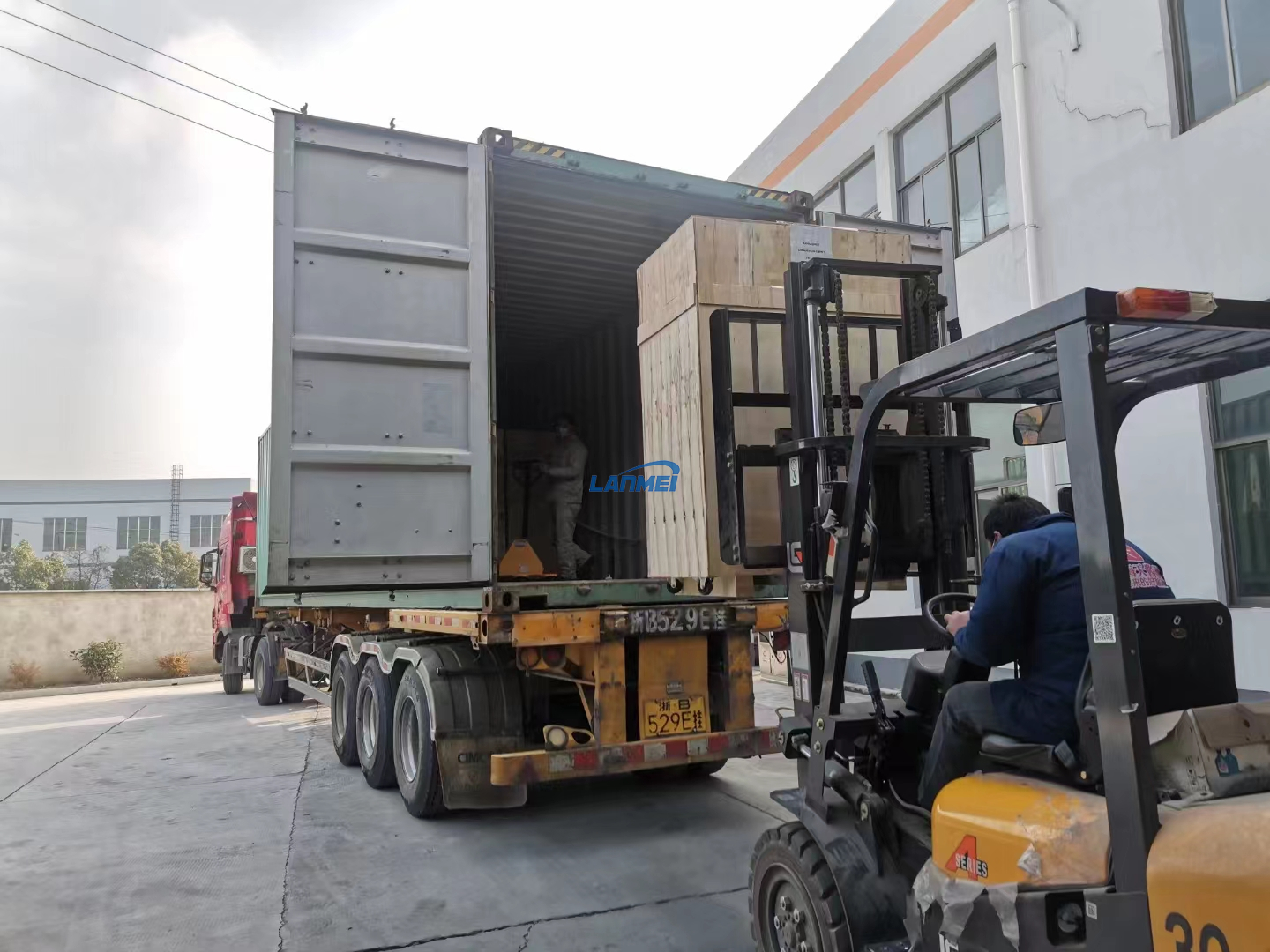

1.Service:
a.If buyers visit our factory and check the machine, we will teach you how to install and use the
machine,
b.Without visiting, we will send you user manual and video to teach you to install and operate.
c.One year guarantee for whole machine.
d.24 hours technical support by email or calling
2.How to visit your company?
a.Fly to Beijing airport:By high speed train From Beijing Nan to Cangzhou Xi (1 hour), then we can
pick up you.
b.Fly to Shanghai Airport: By high speed train From Shanghai Hongqiao to Cangzhou Xi(4.5 hours),
then we can pick up you.
3.Can you be responsible for transport?
Yes,please tell me the destination port or address.we have rich experience in transport.
4.You are trade company or factory?
we have own factory.
5.What can you do if the machine broken?
The buyer send us the photos or videos. We will let our engineer to check and provide professional suggestions. If it needs change parts, we will send the new parts only collect cost fee.





